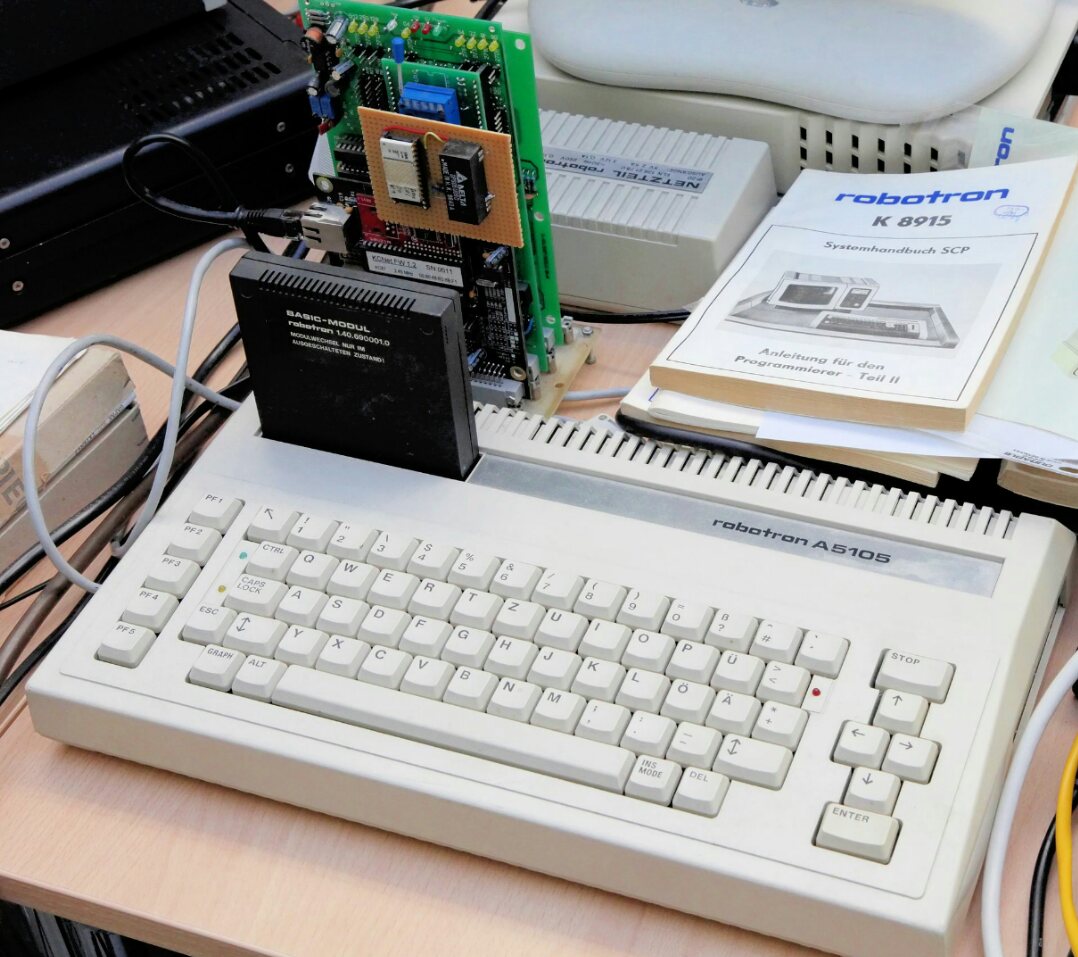Robotron BIC A5105 - unknown person GDR

Florian Schäffer, CC-BY-SA 4.0
Hi, Habr! I read in a recent article :
')
"Stefan Paubel, who founded the computer club HdjT in January 1986 and was its leader, did not recognize computers developed within East Germany - KC 85, created by VEB Mikroelektronik Wilhelm Pieck Mühlhausen and KC 87 manufactured by VEB Robotron."
Why did not recognize, absolutely I do not understand, but this publication is about something else. Wake up at night with a fairly savvy retrocomputer, ask which people, not counting IBM PC-compatible, were in the GDR, and he would cheerfully list: Robotron 1715, two independent KC lines from 85 different manufacturers, and also Amstrad CPC-compatible KC Compact . And do not remember anything about the Robotron BIC A5105. Indeed, it is so unknown that on Wikipedia an article about it is not translated from German into any other language.
The abbreviation BIC has nothing to do with the well-known manufacturer of pens and lighters. It stands for Bildungscomputer, that is, a training computer. Indeed, unlike the machines mentioned above, this one was intended for use in schools and possessed the necessary peripheral device for this — the local network adapter. And if you get exactly the same computer, but under the name ALBA PC 1505 - this is also it, only in the home version.
"Born" BIC A5105 in 1989, and its development began two years earlier. The choice of processor for him was obvious: the U880, an analogue of the Z80, applied to all GDR 8-bit PCs. Yes, in all: in the GDR, unlike in most countries where home and study computers were manufactured, they decided not to experiment with different processors, but to focus on one thing. Its clock frequency is 3.75 MHz. In a machine, 64 kB of RAM and 128 kB of video memory is not a typo. The ROM has a volume of 48 KB, which is more than usually done in eight-bit machines. Of course, not without BASIC. Well, in appearance BASIC as BASIC:
Instead of the 8275 used in the Robotron 1715, and the video adapter on the discrete logic used in the KC85, there is a rather powerful D7220 video chip, also known as the U82720, which provides several video modes. These are text modes: 40 and 80 characters per 25 lines, 16 colors of characters and 8 background colors, and graphic ones: 320x200 and 640x200. In the first of them, you can use either all 16 colors, or 4 from a palette at 16, in the second - only 4 from a palette at 16. In general, it is comparable to CGA, and even more similar to the video adapter of the Tandy 1000 computer. But I don’t understand why for these modes so much video memory - for several pages, probably. A proprietary 26-pin connector is provided for connecting an RGB monitor or a TV, and the “legs” for sound output and connecting a light pen are also there.
About sound. It is monophonic and three-channel, which most likely indicates the use of not a specialized sound chip, but something similar to a VI53. But this is very good: craftsmen get such effects on it - you will hear it simply!
In addition to the school local network, the computer can work with the usual for that time input-output means — a tape recorder and a disk drive (its standard controller is U8272), the second of which is mandatory for the computer class head machine. It was often equipped with standard devices from the Robotron 1715 — a housing with a power supply unit and two Teac drives (in this case, a separate power supply unit K0309 was not required), as well as a “green” monitor. With drives on a computer, you can run the SCPX 5105 OS, compatible with SCP, which, in turn, is compatible with CP / M.
The tape recorder and joystick are connected via standard DIN-5 connectors, and for the first of them, a motor control singal is provided. The printer connector is proprietary, it has so few pins that the printer must have a serial interface. A rather far-sighted decision: in the zero years, this method of connecting printers was finally and completely reversed, only the serial interface is completely different. The second same connector allows you to connect another monitor - only monochrome. And another connector, large and also proprietary, allows you to submit 12 volts to the monitor.
And if you have this monitor completely and irrevocably associated with the Robotron 1715, then it will be very unusual to see the graphics on it:
The same demo is completely on the emulator, where the text is readable:
But if the BIC A5105 itself is little known, then the design of this car may already be familiar to you. The fact is that for KC Compact did not begin to invent a new case, and used the same. And so it happened that the computer case turned out to be more famous than himself.
Sources:
Bildungscomputer robotron A 5105
Robotron A5105 (Robotron BIC)
Source: https://habr.com/ru/post/431716/
All Articles